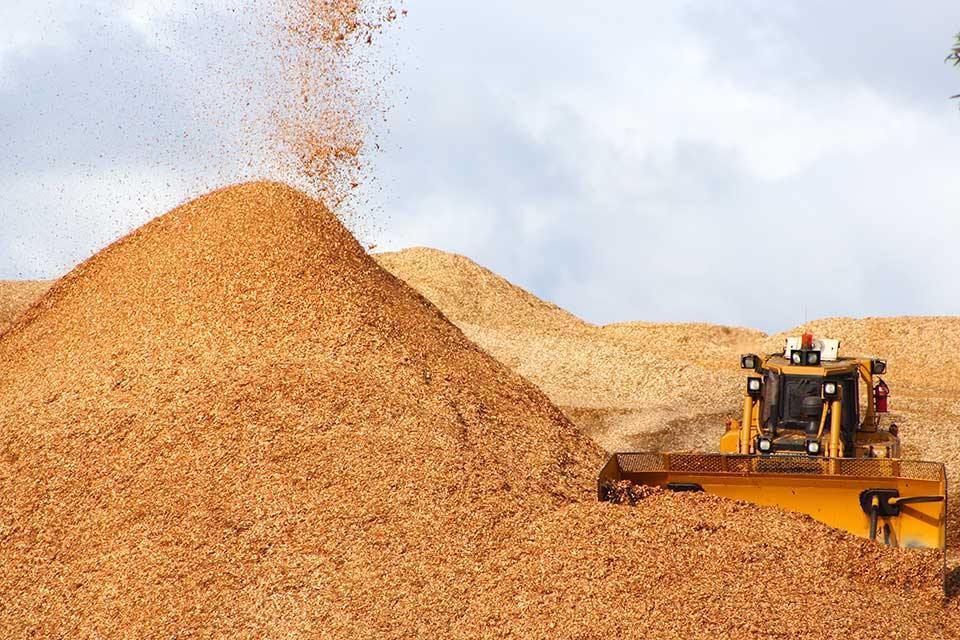High Quality Softwood Woodchips Ready For Export From The Port Of Geelong
Softwood Plantation Exporters (SPE) produces the highest quality softwood woodchips.
Chip exported through SPE is predominantly Pinus Radiata with current volume consisting of 50% from sawmill residue and 50% produced from forest thinning.
Chip Specification
See below the typical chip specification which can be adjusted to suit customer requirements.
Oversize: > 28.5 mm; <5%
Between A: 9.5 mm & 28.5 mm; > 85%
Between B: 3.2 mm & 9.5 mm; < 9%
Fines: < 3.2 mm; < 2% Bark/Rot: < 1%
Woodchips are delivered on a green (moisture included) basis and shipped as Green Metric Tonne (GMT).
One green metric tonne (GMT) of wood is 1000kg woodchip.
Woodchips are sold on a "Bone Dry Metric Tonne" (BDMT) or moisture excluded basis.
Average Dry fibre content of Pinus Radiata is 46-48%
Chipmill
The Chipmill comprises of a 125 ft. radial crane & drum debarker with associated screening, rechipping and conveying systems. Maximum chip mill capacity is 450,000 - 500,000 green metric tonnes (GMT) pa.
Chip produced is high quality. Shipments are guaranteed to meet customers’ exacting chip specifications.
High Pulp Content
Low bark content assists in achieving high pulp yield with little waste or pulp discolouration.
The low bark content reduces the ash output when used as feedstock for Bioenergy. Pinus Radiata chip used in bleached and un-bleached Kraft pulp lines provides high burst and tear strength. High pulp brightness is also a characteristic.
Overall, the high proportion of sawmill chip combined with average chip age provides for good pulp characteristics and yield.
Purpose Built Facilities
SPE loads from modern purpose built facilities at Port of Geelong, Victoria. The chipmill is connected by conveyor to undercover chip stockpile. High-speed conveyor connects the stockpile to wharf for shiploading.
Traveling Shiploader
Travelling shiploader with vertical boom allowing hatch changes in 20 minutes while vessel is stationary. Because of this there is reduced chance of vessel loading being interrupted by weather during loading.
Loading Rates
Loading of 14,000 GMT per day are achieved with average loading rates over entire shipments of 750 GMT per hour. This allows for fast turnaround and considerable savings on travel time and voyage cost.


